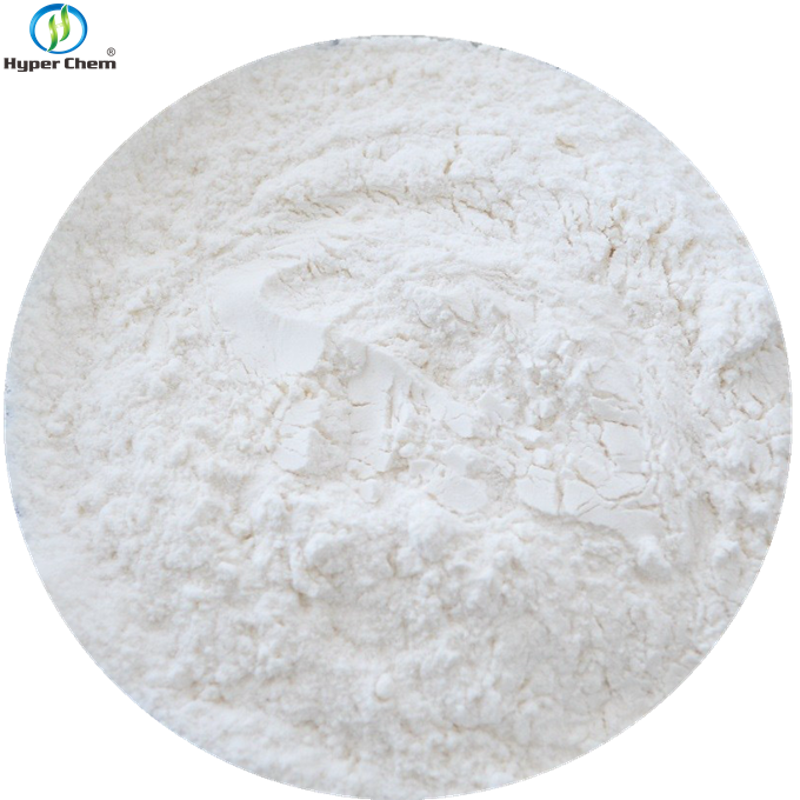-
Categories
-
Pharmaceutical Intermediates
-
Active Pharmaceutical Ingredients
-
Food Additives
- Industrial Coatings
- Agrochemicals
- Dyes and Pigments
- Surfactant
- Flavors and Fragrances
- Chemical Reagents
- Catalyst and Auxiliary
- Natural Products
- Inorganic Chemistry
-
Organic Chemistry
-
Biochemical Engineering
- Analytical Chemistry
-
Cosmetic Ingredient
- Water Treatment Chemical
-
Pharmaceutical Intermediates
Promotion
ECHEMI Mall
Wholesale
Weekly Price
Exhibition
News
-
Trade Service
Written by Wu Kunwei - Wang Sizhen, edited by Fang Yiyi - Xia Ye
Sleep is an essential and widespread behavioral phenomenon
throughout the animal kingdom.
Sleep promotes memory consolidation, while sleep deprivation disrupts memory processes that are closely related to changes in the plasticity of synapses between neurons [1, 2].
However, little is known about how this plasticity is caused by sustained activity in neuronal networks, and how different brain states affect this plasticity
.
Current research on sleep on synaptic regulation focuses on excitatory synapses [3, 4].
Studies have shown that sleep reduces AMPA-type glutamate receptors, excitatory synapse strength, and dendritic spine density [5-9].
Compared with extensive research on excitatory synapses, research on how sleep regulates inhibitory
synapses is rare.
Since excitation and inhibition in brain networks are balanced against each other, thereby stabilizing neural circuit function, and the regulation of inhibitory synapses plays a crucial role in learning and memory [10,11], it is necessary to understand the effects of
sleep on inhibitory synaptic transmission and plasticity.
ON NOVEMBER 1, 2022, THE LU WEI TEAM OF THE NATIONAL INSTITUTES OF HEALTH (NIH) PUBLISHED A PRESENTATION IN PLOS BIOLOGY Research paper "Sleep and wake cycles dynamically modulate hippocampal inhibitory synaptic plasticity".
The study found that the sleep-wake cycle dynamically regulates hippocampal inhibitory synaptic plasticity
.
NIH senior researcher Lu Wei is the corresponding author, and postdoctoral fellow Wu Kunwei is the first author
.
(Extended reading: The progress of Lu Wei's team is detailed in the "Logical Neuroscience" report: NPP-Lu Wei's team reveals a new mechanism for GABAA receptor-assisted subunit phosphorylation modification to regulate neural behavior.
) ; Nat Aging—Wang Guohao/Lu Wei/Hou Xianyu et al.
found that neuronal aggregation of lipid peroxide activates microglia NLRP3 inflammatories to promote demyelination and neuronal degeneration).
In this study, the researchers employed a real-time, non-invasive sleep recording system to monitor the sleep/wake state of mice, and then recorded the inhibitory synaptic activity of hippocampal pyramidal neurons through patch-clamps, and found that compared to mice during sleep, tension inhibition increased and phased inhibition decreased during arousal (Figure 1A-F).
。 This suggests that inhibitory synaptic transmission changes rhythmically with
the sleep-wake cycle.
Next, the researchers went on to explore changes in inhibitory synaptic plasticity during the sleep-wake cycle, inducing inhibitory long-term enhancement (iLTP) through rapid perfusion NMDA, which found that hippocampal vertebral body neurons in both sleep and awakening mice can pass NMDA rapid perfusion induced iLTP, and awakened mice exhibited stronger iLTP (Figure 1G-I).
This suggests that not only does the underlying inhibitory synaptic transmission change rhythmically with the sleep-wake cycle, but inhibitory synaptic plasticity can also be regulated
by the sleep-wake cycle.
Figure 1 Changes
in inhibitory synaptic transmission and plasticity during the sleep-wake cycle.
(Source: Wu et al.
, Plos biology, 2022).
Pyramidal neurons in the brain receive inhibitory input from different types of interneurons that target pyramidal neurons to form specific, precise synaptic contacts that dynamically control pyramidal neuron activity
.
So is the inhibitory synaptic plasticity of hippocampal pyramidal neurons in sleep and wakefulness input-specific? Hippocampal pyramidal neurons receive inhibitory synaptic input from a variety of interneurons, of which the main ones are inhibitory small albumin (PV) interneurons and somatostatin (SOM) interneurons, which project to the cell body and distal dendrites of pyramidal neurons to form PV, respectively Synapses and SOM synapses
.
Using optogenetic methods combined with patch-clamp recording, the researchers found that PV synapses rather than SOM synapses expressed iLTP, or PV-iLTP, whether during sleep or wakefulness
。 PV-iLTP also showed rhythmic changes, with stronger PV-iLTP in awakened mice (Figure 2A-I).
Further experiments showed that when α5-GABAA receptors were blocked during arousal, the arousal-dependent iLTP enhancement would disappear, indicating that the synaptic plasticity changes during arousal were caused by PV Mediated
by an increase in the number of α5-GABA receptors within synapses.
Finally, in order to rule out that these effects were caused by recording at different times of the day, the researchers subjected the mice to sleep deprivation and then recorded them at the same time of day with the sleeping mice, and the results showed that sleep deprivation, like the awakening mice, also showed that PV-iLTP was stronger (Figure 2J-L).
And depends on an increase
in the number of α5-GABA A within the PV synapse.
This suggests that input-specific inhibitory synaptic plasticity changes are determined by sleep-wake states, independent of the time of day
.
Fig.
2 Increased number of α5-GABAA receptors in PV synapses mediates arousal-dependent synaptic
plasticity.
(Source: Wu et al.
, Plos biology, 2022).
In summary, the study used a mouse model to discover a new mechanism
of inhibitory synaptic rhythmic changes.
This mechanism may be a way for
inhibitory inputs to precisely control the interaction of information between neurons and throughout brain networks.
Because the neural circuits used by humans and mice for memory storage and other important cognitive processes are similar
.
The discovery also helps to understand how subtle synaptic changes regulate the human memory process
.
However, the specific mechanism of inhibitory synaptic function and plasticity changes in the sleep-wake cycle in memory consolidation remains to be explored
.
Original link: https://doi.
10.
1371/journal.
pbio.
3001812
First author: Wu Kunwei (left); Corresponding author: Lu Wei (right)
(Photo courtesy of: Lu Wei Laboratory)
Synapse and Neural Circuit laboratory at NINDS, NIH.
Our central goal is to understand actions of molecules in the brain in the context of synapses, circuits and behaviors.
Currently we are using GABAergic synapses in rodents as the model system to discover novel molecules that play critical roles in regulating inhibitory transmission, plasticity, and behavior.
We are also interested in taking advantage of molecular signaling and pathways that we have discovered to reverse the devastating effect of brain illness on synapses and animal behaviors.
A postdoc position is available.
Lab website: https://research.
ninds.
nih.
gov/researchers/faculty/wei-lu-phd.
Welcome to scan the code to join Logic Neuroscience Literature Learning 3
Group remarks format: name--research field-degree/title/title/position
[1] J Neuroinflammation—Zhuo Yehong/Su Wenru's team revealed that iron death may be a new mechanism and therapeutic target of retinal ischemia-reperfusion
[2] PNAS-Zhong Yi's research group revealed that the forgetting mechanism of Rac1-dependence is the neural basis for emotional states to affect memory expression
[3] Cell Metab Review—Cao Xu's team reviews the regulation of osteohomeostasis and bone pain by the intraosseous sensory system
[4] NAN-Yuan Linhong's research group revealed that DHA intervention had different effects on brain lipid levels, fatty acid transporter expression and Aβ metabolism in ApoE-/- and C57 WT mice
[5] Autophagy Review—Li Xiaojiang's team reviews the differences and research progress of mitochondrial autophagy in vivo and in vitro models
[6] HBM-Shang Huifang's research group revealed the markers of motor progress in Parkinson's disease through functional imaging technology
[7] Cell Rep—Song Jianren's research group reveals a new law of spinal circuit reconstruction after spinal cord injury
[8] HBM-Song Yan/Sun Li's research group revealed the cognitive neural base of implicit visuospatial coding disorder in children with ADHD based on machine learning technology
[9] Nat Neurosci – Breakthrough! Li Bo's research group at Cold Spring Harbor Laboratory revealed the neural mechanism of pan-amygdala structure regulating diet choice and energy metabolism
[10] The Nat Commun-Xing Dajun research group revealed a new mechanism for specific modulation of visual information encoding in the direction of micro-saccade
Recommended high-quality scientific research training courses[1] Symposium on single-cell sequencing and spatial transcriptomics data analysis (November 5-6, Tencent Online Conference)[2] The 9th EEG Data Analysis Flight (Training Camp: 2022.11.
23-12.
24)
Welcome to join "Logical Neuroscience"[1] Logical Neuroscience "Editor/Operation Position (Online Office)[2] Talent Recruitment—" Logical Neuroscience "Recruitment Article Interpretation/Writing Position ( Online Part-time, Online Office) References (Swipe up and down to read)
[1] Tononi G, Cirelli C.
Sleep and the price of plasticity: from synaptic and cellular homeostasis to memory consolidation and integration.
Neuron.
2014; 81(1):12–34.
[2] Walker MP, Stickgold R.
Sleep, memory, and plasticity.
Annu Rev Psychol.
2006; 57:139–66.
[3] Frank MG.
Renormalizing synapses in sleep: The clock is ticking.
Biochem Pharmacol.
2021; 191:114533.
[4] Vyazovskiy VV, Faraguna U.
Sleep and synaptic homeostasis.
Curr Top Behav Neurosci.
2015; 25:91–121.
[5] Diering GH, Nirujogi RS, Roth RH, Worley PF, Pandey A, Huganir RL.
Homer1a drives homeostatic scaling-down of excitatory synapses during sleep.
Science.
2017; 355(6324):511–5.
[6] Vyazovskiy VV, Cirelli C, Pfister-Genskow M, Faraguna U, Tononi G.
Molecular and electrophysiological evidence for net synaptic potentiation in wake and depression in sleep.
Nat Neurosci.
2008; 11(2):200–8.
[7] Liu ZW, Faraguna U, Cirelli C, Tononi G, Gao XB.
Direct evidence for wake-related increases and sleep-related decreases in synaptic strength in rodent cortex.
J Neurosci.
2010; 30(25):8671–5.
[8] de Vivo L, Bellesi M, Marshall W, Bushong EA, Ellisman MH, Tononi G, et al.
Ultrastructural evidence for synaptic scaling across the wake/sleep cycle.
Science.
2017; 355(6324):507–10.
[9] Maret S, Faraguna U, Nelson AB, Cirelli C, Tononi G.
Sleep and waking modulate spine turnover in the adolescent mouse cortex.
Nat Neurosci.
2011; 14(11):1418–20.
[10] Brickley SG, Mody I.
Extrasynaptic GABA(A) receptors: their function in the CNS and implications for disease.
Neuron.
2012; 73(1):23–34.
[11] Hines RM, Davies PA, Moss SJ, Maguire J.
Functional regulation of GABAA receptors in nervous system pathologies.
Curr Opin Neurobiol.
2012; 22(3):552–8.
End of this article







